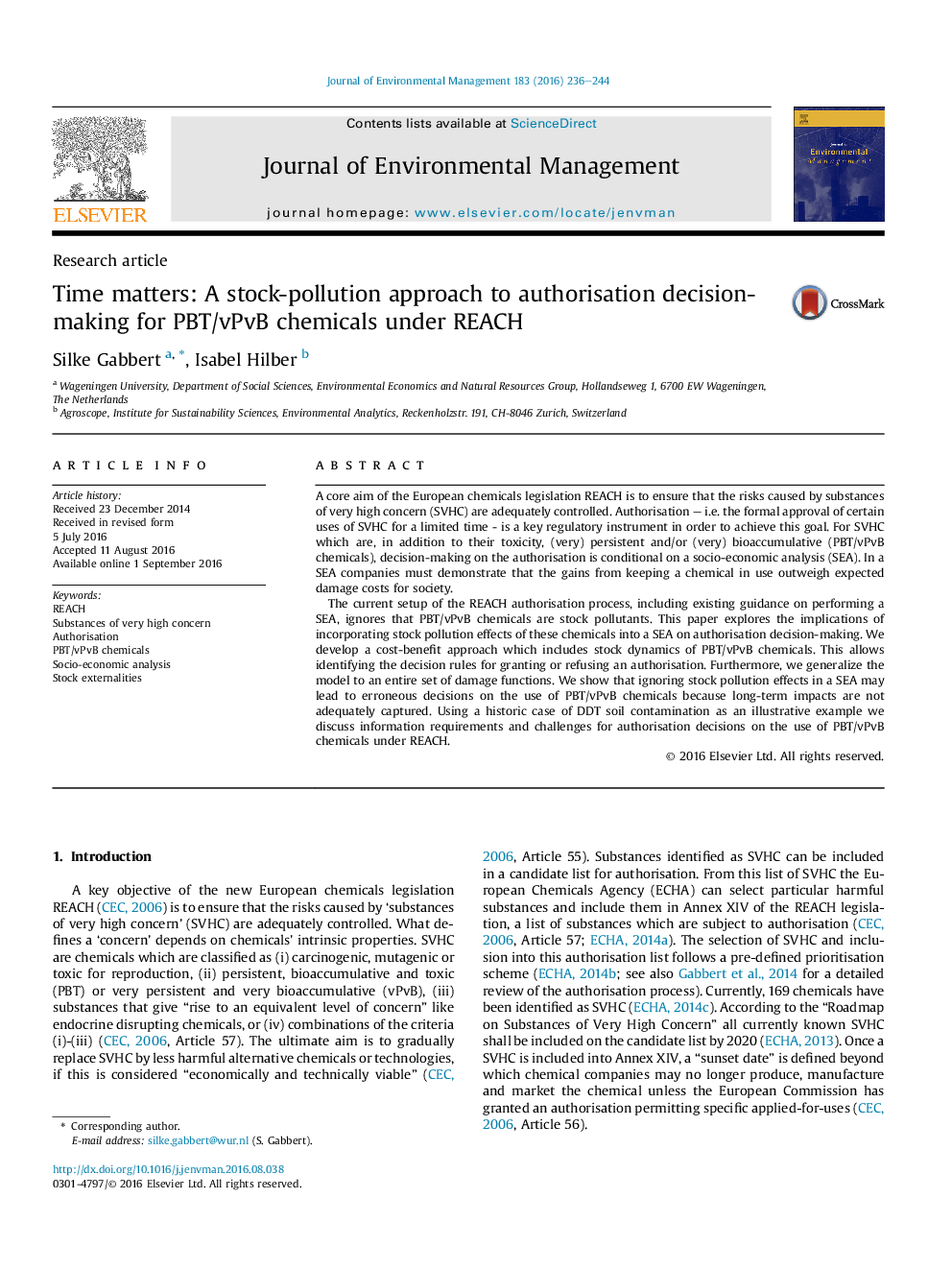| کد مقاله | کد نشریه | سال انتشار | مقاله انگلیسی | نسخه تمام متن |
|---|---|---|---|---|
| 5117308 | 1378121 | 2016 | 9 صفحه PDF | دانلود رایگان |

• Within REACH the authorisation of persistent chemicals is based on a socio-economic analysis.
• Socio-economic analysis must account for stock externalities of persistent chemicals.
• The paper develops a dynamic CBA benchmark model that captures stock dynamics of persistent chemicals.
• The model identifies the decision rules for granting or refusing an authorisation.
• A case study illustrates the implications of stock externalities for authorisation decision-making under REACH.
A core aim of the European chemicals legislation REACH is to ensure that the risks caused by substances of very high concern (SVHC) are adequately controlled. Authorisation – i.e. the formal approval of certain uses of SVHC for a limited time - is a key regulatory instrument in order to achieve this goal. For SVHC which are, in addition to their toxicity, (very) persistent and/or (very) bioaccumulative (PBT/vPvB chemicals), decision-making on the authorisation is conditional on a socio-economic analysis (SEA). In a SEA companies must demonstrate that the gains from keeping a chemical in use outweigh expected damage costs for society.The current setup of the REACH authorisation process, including existing guidance on performing a SEA, ignores that PBT/vPvB chemicals are stock pollutants. This paper explores the implications of incorporating stock pollution effects of these chemicals into a SEA on authorisation decision-making. We develop a cost-benefit approach which includes stock dynamics of PBT/vPvB chemicals. This allows identifying the decision rules for granting or refusing an authorisation. Furthermore, we generalize the model to an entire set of damage functions. We show that ignoring stock pollution effects in a SEA may lead to erroneous decisions on the use of PBT/vPvB chemicals because long-term impacts are not adequately captured. Using a historic case of DDT soil contamination as an illustrative example we discuss information requirements and challenges for authorisation decisions on the use of PBT/vPvB chemicals under REACH.
Journal: Journal of Environmental Management - Volume 183, Part 1, 1 December 2016, Pages 236–244